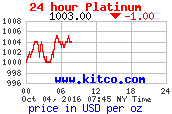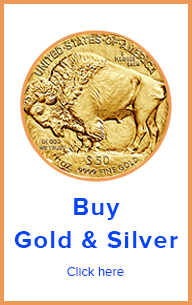Diamond Nominal Weights
Nominal Weights Vs Measured Weights
Diamond Buyer Portland – 971-222-3435
Nominal Diamond Weights – Portland
Measured and Nominal Diamond Weights are Different
- Nominal diamond weight is most often closely above the measured diamond weight
- Nominal is a “rounded up” diamond weight
- Highly affects diamond retail and wholesale price
This article explains the main the difference between measured and nominal diamond weights, which are different concepts.
Diamond Measured Weights
Diamond measured weight is the weight of a diamond mass, as measured and read from a well calibrated diamond carat scale. Learn more. In short, a diamond’s measured weight is what the scale’s display reads, in carats, when the diamond is placed in the scale’s trey. Diamonds are so light, that there may be minor variations in readings by different scales in different location. However, if such scales are well calibrated, the readings should be extremely close. Most often, the weight of the diamond will not be a “round” figure, meaning ending in five, or zero.
Examples:
0.87 carat
1.02 carat
.74 carat
1.98 carat
Diamond Nominal Weights
Diamond nominal weight is the weight, rounded up, to which the diamond most resembles to. The measured weight is most often a few points (learn more) lighter than the nominal diamond weight. In smaller diamonds, the difference is often one to three points. On larger diamonds more. In diamonds, one point is 1/100 carat, or 1% of one carat.
Examples:
– Quarter Carat Diamond (Nominal)
Diamond nominal weight is “1/4 carat” (one quarter carat). Chances are that diamond actual measure weight will be a little less than exact one quarter carat. Most likely the diamond will be 0.23 or 0.24 carat measured weight, rather than the nominal 0.25 carat (one quarter carat = 1.00/4 = 0.25).
– Third Carat Diamond (Nominal)
Diamond measured weight may most likely be between 0.29 carat and 0.33 carat
– Three Quarter Carat Diamond (Nominal)
Diamond measured weight may most likely be between 0.7 carat and 0.75 carat.
Implications
What really matters about nominal and measured weights is the implications at the time of buying the diamond from a jewelry store, and when selling it to a professional diamond buyer.
All else being basically the same, there is very little difference between for example a 0.23 carat diamond and a 0.25 carat diamond. In fact, they are so close in size, that they can only be distinguished. The larger the diamonds, the larger the possible gap between measured and nominal diamond carat weight.
Diamond stores display comparable quality and size diamonds together. Larger, higher quality diamonds are displayed with the other similar ones. Not with smaller, lower quality ones, for example. If the display is well put together, to the untrained person, and even to a professional just using the naked eye, all the diamonds look almost the same size. The diamond retailer will put all the “quarter carat” diamonds together in the “quarter carat” display. All the “half carat” diamonds together in the “half carat” display, and so forth.
Example
At a diamond retailer, all the diamonds in the quarter carat displayed will be called “quarter carat” diamonds. However, all else being the same, some will be less expensive than others. Chances are that the less expensive “quarter carat” diamonds are really “nominal quarter carat”. They are less expensive because their measured weight is less then 0.25 carat. The less expensive diamonds in “quarter carat” display will be 0.23 and 0.24 carat. The most expensive will most likely be the 0.25 carat diamond. There may be one that is even 0.26 carat at just above in price from the 0.25 carat. The result is that the buyer, at the time of buying from the retailer, gets more value out of the smaller, nominal “quarter carat” diamond, than from the 0.25 carat measured weight diamond. However, if it ever happens, at the time of re-selling a quarter carat nominal weight diamond, the offer will be lower, because the professional diamond buyer will use the measured diamond carat weight, rather than the nominal carat weight.
Conclusions
- Nominal diamond carat weight is different from measured diamond carat weight
- The difference between the nominal and measured weight of a diamond is usually so little, that instruments must be used to determine it
- Nominal diamond weight is a “rounded up” number, usually a few points heavier than the measured diamond carat weight
- Lighter than nominal carat weight diamonds tend to be a better value at the time of buying from a retailer
- A professional diamond dealer, at the time of buying a diamond from the public, will discount the diamond more if the diamond measured carat weight is less than the diamond measured weight


![[Most Recent Quotes from www.kitco.com]](http://www.kitconet.com/charts/metals/gold/t24_au_en_usoz_2.gif)
![[Most Recent Quotes from www.kitco.com]](http://www.kitconet.com/charts/metals/silver/t24_ag_en_usoz_2.gif)
![[Most Recent Quotes from www.kitco.com]](http://www.kitconet.com/charts/metals/platinum/t24_pt_en_usoz_2.gif)










